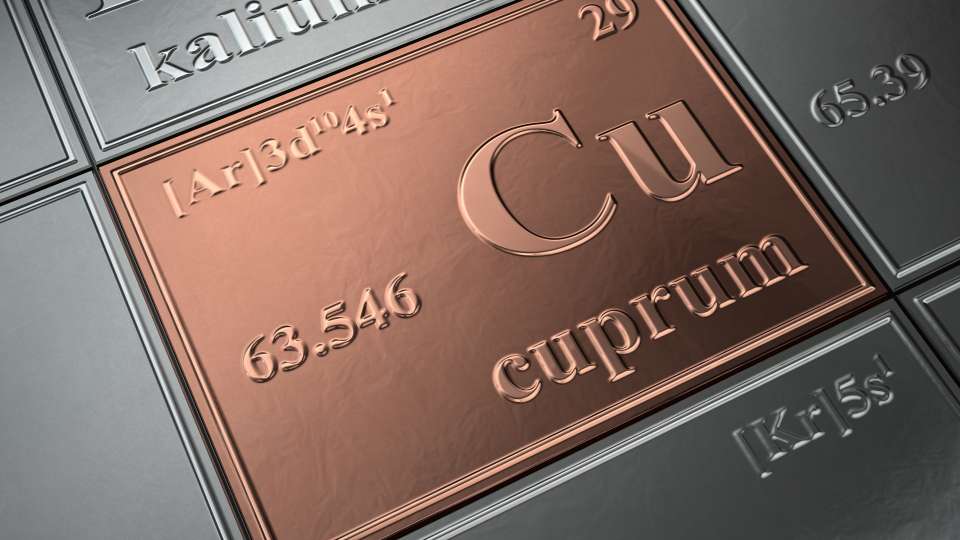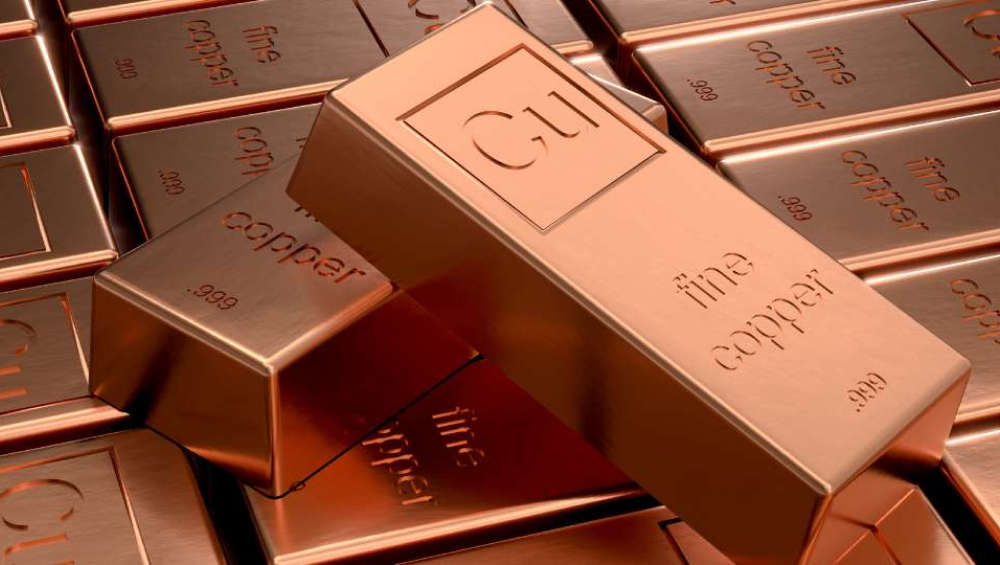What is Arbitrage Trading?
In the intricate world of commodities trading, a trading strategy that has garnered significant attention is arbitrage trading.
How to Do Arbitrage Trading?
Arbitrage commodity trading involves exploiting price discrepancies of an asset between different markets to make a profit. Traders buy the asset at a lower price in one market and simultaneously sell it at a higher price in another market, capitalizing on the temporary price difference.
One such commodity for which this trading strategy is common among traders is refined copper.
Refined copper is a vital industrial metal with applications spanning various industries, most notably in the electrical and electronics sector. This dynamic utilization makes the refined copper market an active arena for traders in search of profitable opportunities.
In this article, we explore the realm of refined copper arbitrage trading, delving into the 4 Things To Note For Refined Copper Arbitrage Trading.

1. Exchanges For Refined Copper Arbitrage Trading
Copper Futures are actively traded on the Shanghai International Energy Exchange (INE), London Metal Exchange (LME), and the Chicago Mercantile Exchange (CME). Traders can trade these Copper Futures Contracts through Orient Futures Singapore.
According to the LME news report, LME Copper is settled through the delivery or receipt of a warrant for copper located in any of the approved 34 global locations. In contrast, the CME copper warehouse network is limited to US locations, resulting in a copper price that is more US-specific. INE Copper is based on the China market, with its prices influenced by factors specific to China’s copper market.
Due to these price source differences, cross-arbitrage trading has become a popular strategy for traders across these markets, as traders can tap into the price disparities to exploit potential profit opportunities.
By purchasing copper contracts from one exchange with a lower price and selling them on another with a higher price, traders can capitalize on the variations in regional pricing.
Click to find out more about the contract specifications of Copper Futures from the exchanges:
LME Copper Contract Specifications
INE Copper Contract Specifications
CME Copper Contract Specifications (COMEX)
Please take note of the LME trading hours, INE trading hours and CME Trading hours might differ from each other.
2. Functions of Arbitrage Trading
The primary goal of Refined Copper trading arbitrage is to generate profits by taking advantage of price disparities. However, there are also other functions of arbitrage trading that traders can utilize this trading strategy for.
Price Equalization
The practice of refined copper arbitrage trading is not just confined to individual gain, it also has a ripple effect on the broader market. As such, one of the other common functions of arbitrage trading is to help equalize prices for the same or similar assets across different markets.
When price disparities occur between different markets or exchanges, arbitrageurs take advantage of these differences by buying at the lower price and selling at the higher price. This activity contributes to narrowing the price gap and promoting price consistency across the different markets. This, in turn, stabilizes the global copper market and fosters a more transparent trading environment.
Risk Mitigation
The arbitrage strategy provides inherent risk mitigation due to its nature of involving both buying and selling related assets. This strategy effectively hedges against broader market volatility, as the arbitrageur’s profit isn’t reliant on the overall market’s direction. Even in the face of significant volatility or uncertain market movement, the arbitrageur’s profit remains intact as long as the price discrepancy continues to exist.
3. Things to Look Out for on Refined Copper Arbitrage Trading
For Refined Copper Arbitrage Trading, traders need to be mindful of the following factors:
Stay Informed On Market News
Traders should stay updated with the latest market news, events, and trends that might influence copper prices across various exchanges. Factors like supply-demand imbalances, geopolitical shifts, economic indicators, and currency fluctuations can significantly impact copper prices. By staying well-informed, traders can identify potential arbitrage opportunities effectively.
For the latest news, traders can refer to the Orient Futures Singapore’s blog.
Monitor Price Discrepancies
Traders should consistently monitor copper prices across various exchanges to identify potential discrepancies. Due to distinct market dynamics and participants, prices can vary between exchanges. Keep an eye out for situations where copper is priced higher on one exchange and lower on another, as this could indicate a possible arbitrage opportunity.
Execute Swiftly
Arbitrage opportunities are often short-lived due to the speed of electronic trading. When a favorable price difference is detected, traders must act swiftly to execute the trade. Traders should use trading platforms that offer quick order execution and real-time data feeds to make the most of these opportunities.
Orient Futures Singapore provides a diverse range of trading platforms that can be tailored to every trader’s preference.
Factor in Transaction Costs
Traders need to keep in mind that arbitrage trading involves transaction costs, which includes commissions, fees, and possible currency conversion expenses if trading on different exchanges with varying currencies. It is essential for traders to ensure that the potential profit from the arbitrage trade surpasses these costs.

4. Keep Updated on The Latest Copper Market News
In order the tap into the potential of Refined Copper Arbitrage Trading, Traders need to keep updated on the latest Copper Market News. An example of such market news update is based on Orient Research Weekly Updates on the Fundamental Data of Copper Industry Chain dated 20082023.
LME Copper inventory continued to increase, while COMEX Copper inventory saw a decline. Bonded copper inventory also experienced a decrease. This shift turned the marginal global explicit inventory from an upward trend to a downward one, with China’s inventory decreasing more than anticipated. Overseas inventory continued to grow, contributing to a significant weakening of the margin between copper prices in different markets.
Overseas copper ore supply has surged, accelerating the growth of copper concentrate supply. This is likely to be matched by a notable rebound in demand for concentrate from Chinese smelters, which could impact China’s copper concentrate processing fees.
Meanwhile, in the smelting sector, Chinese smelters are experiencing improved profitability and boosted production due to supportive policies. The favorable scenario, particularly with sulfuric acid prices and non-standard copper imports, could result in an upward revision of smelting profits. However, constraints on standard copper imports could continue, prompting scrutiny of refined copper import structural changes.
Overseas, European smelters are expected to gradually resume production in the third quarter, but South American smelter production is likely to continue to be sluggish, and overall, global refined copper production growth is expected to accelerate.
In terms of demand, the Chinese copper demands is set to recover further due to policy stimuli. Strong demand is evident in power equipment and the new energy sector. Despite declining demand in Europe and the Americas, there’s no notable contraction in micro-demand.
Start Trading With Orient Futures Singapore
Being an Overseas Intermediary of Shanghai International Energy Exchange (INE), Dalian Commodity Exchange (DCE), and Zhengzhou Commodity Exchange (ZCE), when foreign clients participate in internationalised futures contracts in these Chinese markets with us, they have direct access to trading, clearing, and settlement. Our parent company, Shanghai Orient Futures, is the largest broker in terms of aggregated volume across the five regulated exchanges in China.
Orient Futures Singapore also currently holds memberships at the Singapore Exchange (SGX), Asia Pacific Exchange (APEX), and ICE Futures Singapore (ICE SG).
We provide premium customer service at an affordable cost to all our clients. Our team will be there for you 24 hours on trading days to provide a one-stop portal for all your trades, with simple processes and an intuitive user interface that has low or near-to-zero latency.



